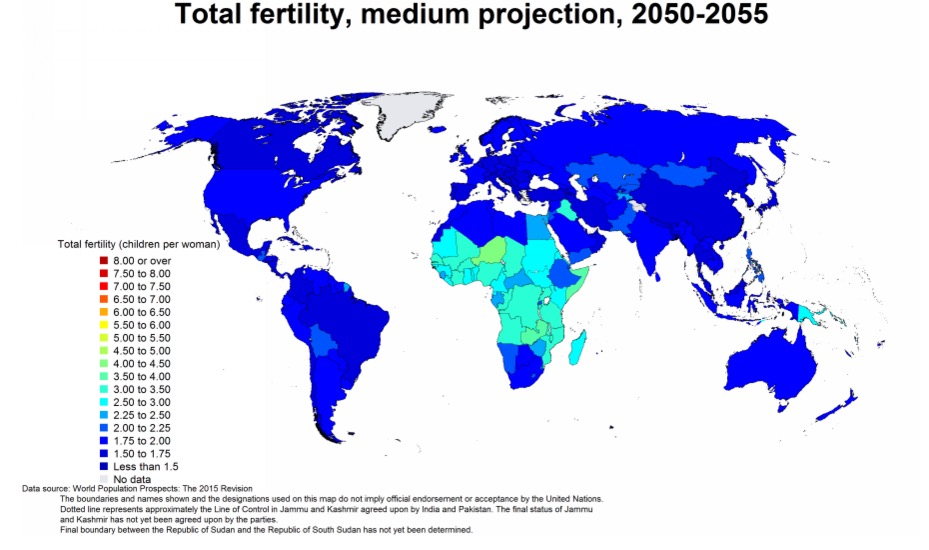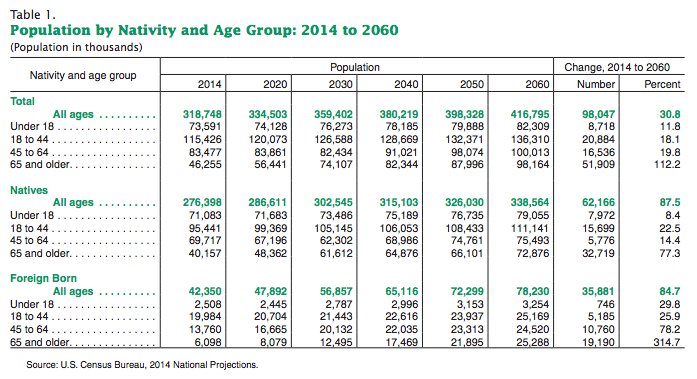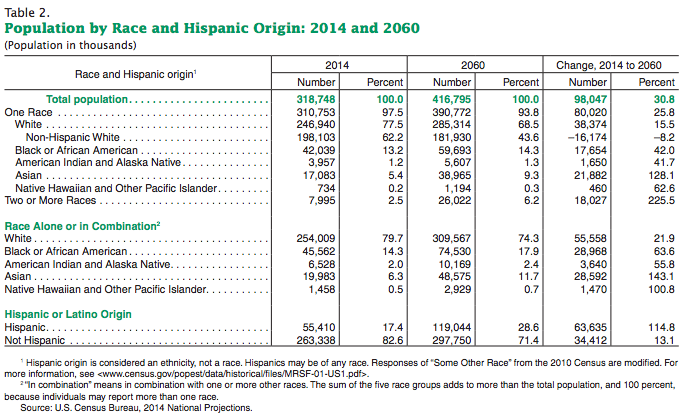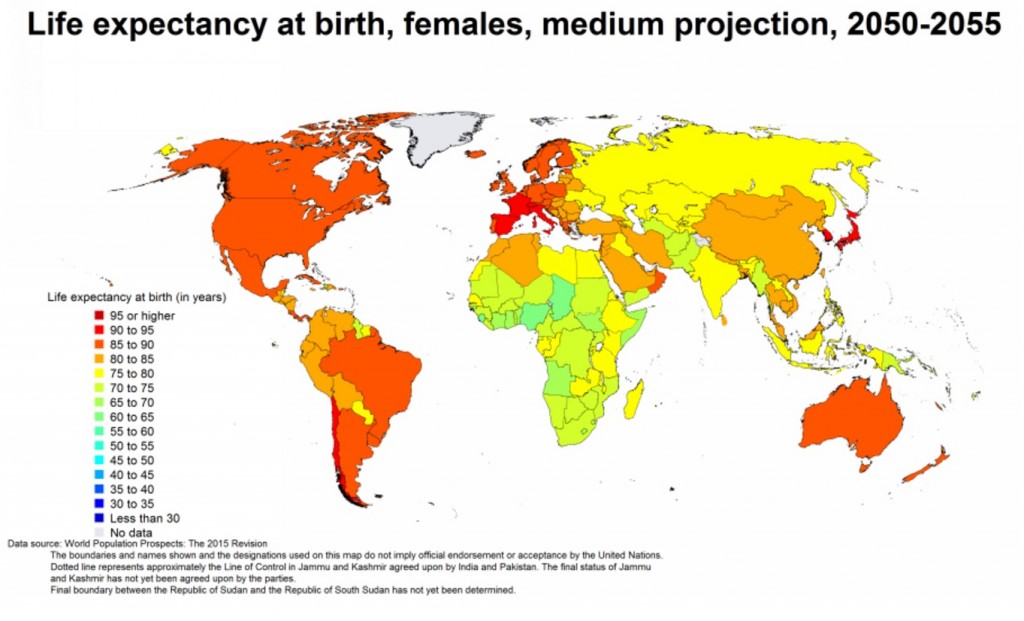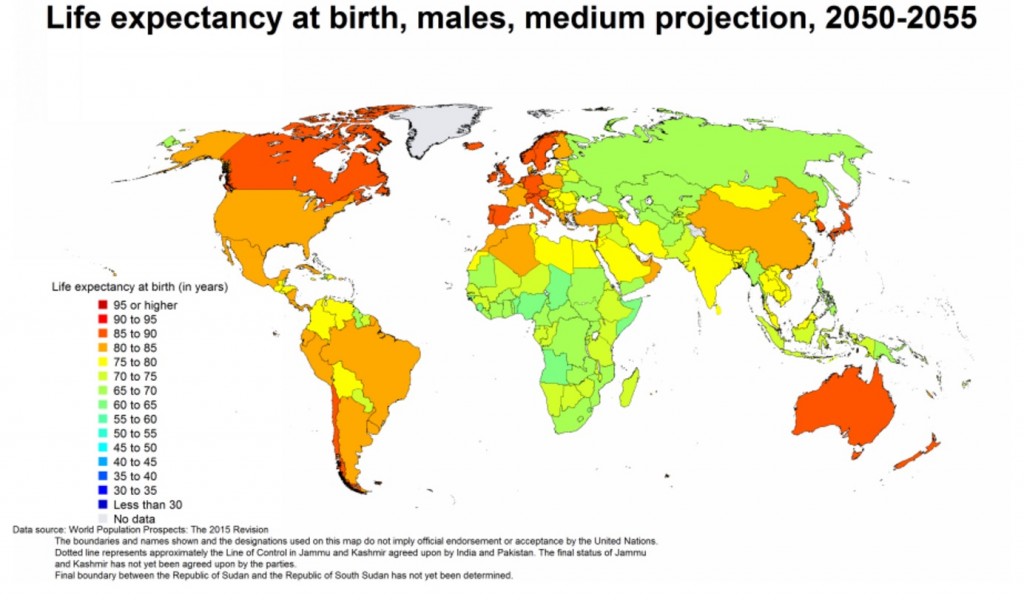Population and Fertility Projections
Future population growth is highly dependent on the path that future fertility will take and according to the World Population Prospects, 2015 Revision (United Nations), global fertility is projected to fall from 2.5 children per woman in 2010-2015 to 2.4 in 2025-2030 and 2.0 in 2095-2100.
Even assuming that fertility levels will continue to decline, the global population is still expected to reach 8.5 billion in 2030, 9.7 billion in 2050 and 11.2 billion in 2100, according to the medium projection variant. In 2016, it is projected that 83 million people will be added to the world’s population.
In the United States, fertility is projected to rise from 1.89 children per woman in 2010-2015 to 1.92 in 2045-2050. Below is a world map of Total fertility, 2050-2055.
Other key findings:
Data Source:
United Nations. 2015.
World Population Prospects: The 2015 Revision.
Department of Economic and Social Affairs, Population Division.
*
Src:
U.S. Census Bureau. March 2015.
“Projections of the Size and Composition of the U.S. Population: 2014 to 2060.”
Life expectancy at birth in 2050
The Department of Economic and Social Affairs of the United Nations provides population projections for the period 2015-2100. Projections are presented for five-year periods. Below are world maps of life expectancy at birth for females and males, 2050-2055.
In the United States, life expectancy at birth for females is projected to rise 10 years from 80-85 years in 2015 to 90-95 years in 2050. For men, it will rise 10 years from 75-80 years to 80-85 years.
Data Source:
United Nations. 2015.
“World Population Prospects: The 2015 Revision.”


